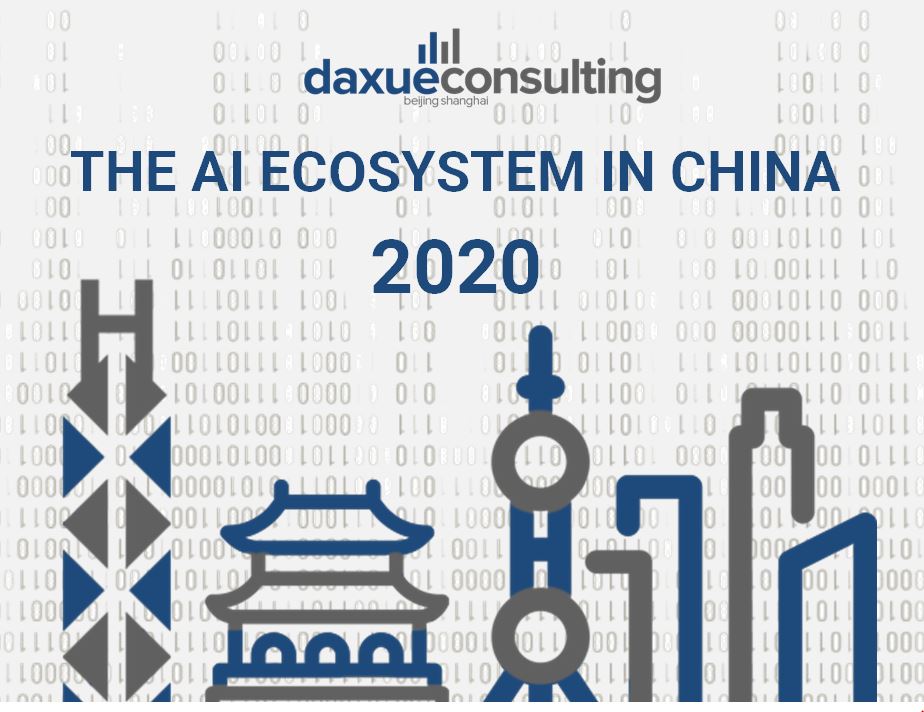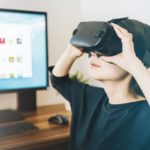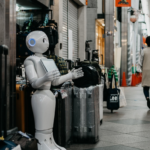The AI in China 2020 White Paper
This AI in China white paper is broken into two parts. The first section details the types of AI technology currently employed in China. The second part explains how industries are leveraging this technology with concrete examples. This report is available, for free, to anyone interested to learn more about the role of artificial intelligence in China.
Download our AI in China white paper now
AI in China White Paper summary
The history of AI in China
In 2011, Chinese AI hit a stage of rapid growth, including big data, IoT, and cloud computing. Today in 2020, China is a global AI technology powerhouse. These advances are further welcomed by Chinese positive perceptions towards technology. Chinese giants like Alibaba, Tencent, and Baidu are already reaching cross-border for collaboration. China’s AI market in 2020 is estimated to be 71 Billion RMB in size.
AI used to combat the Coronavirus
China had unprecedented advancements in AI technology during the Coronavirus outbreak. According to a WHO report mentions the use of aggressive and cutting edge technology during the epidemic. Some of these technologies were used to control the outbreak, for example surveillance, fever detection, and QR codes. While other technology was used in diagnosis, like smart CT scans. China has also used AI technology for public health purposes, like disinfectant robots, and real-time maps showing the location of active infections.
AI in healthcare
The amount of investment in AI in the healthcare industry in China is the highest in the world. The quality of research is third in the world. Current applications of AI technology in China’s healthcare industry include medical imaging, diagnosis, medicine discovery, health management, and disease prediction.
AI in beauty
AI in China’s beauty industry is focused on improving customer experience. The cosmetics industry is ahead in the implementation of unmanned stores and booths. Additionally, China’s beauty companies have virtual try-ons, a technology yet to further expand in the fashion retail industry.
AI in new retail
New retail in China is largely possible thanks to the development of AI. New retail in China is the merge of online and offline retail, effectively eliminating the data boundaries between online and offline. AI technology for new retail in China includes: QR codes, Radio Frequency Identification Devices, machine vision. These technologies make unmanned stores possible, the next steps of AI in new retail will be to improve the consumer journey.
AI in manufacturing
Artificial Intelligence in Chinese factories can be classified into two sections. First is research and development. The technologies used include Facial Recognition, Voice Recognition, Deep Learning, Machine Learning Natural Language, and Neural Networks. Secondly, is production process improvement. The technology involved includes autonomous robots and monitors to improve the efficiency of production.
AI in transportation
At first thought, AI in transportation may be driver-less vehicles. However, Chinese AI applications in transportation go beyond autonomous vehicles to include more elements of public transportation. This means smart city development, such as smart security for subways and trains, and an ‘urban brain’ of traffic analysis.
AI in food and beverage
The applications of AI in China’s food and beverage industry include novelty robots acting as servers, big data used to better cater to consumers, the development of drones for food delivery, and surveillance for food safety.
AI in hospitality
The main application of AI in hospitality in China is automating hotels, which lowers management costs and improves efficiency of booking and check-in services. Additionally, AI-powered computers mine data to provide tailored customer experiences.
AI in video games
Applications of AI in video games in China includes video game creation, more sophisticated non-player computers, and more realistic virtual reality. On the other hand, the relationship between AI and video games goes both ways, as video games also test and improve AI.
AI used by public institutions
The two main uses of AI by the central government include security, including cyber-security and surveillance, an military, which includes autonomous vehicles and decision making. Since the breakout of COVID-19 in China, where China witnessed the success of surveillance in containing the outbreak, AI applications in surveillance are likely on a path of expansion.
AI in advertising
In 2018, the China’s mobile advertising market size exceeded 400 billion RMB, and had a growth rate of nearly 50%. With the combination of AI and the Chinese advertising market, there will be further growth in the advertising market. AI applications include ad creation, ad placement, and ad detection.















